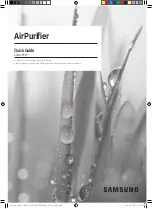
RT-SVF25C-EN
17
Sequence of Operation
6. A purge cycle takes priority over normal cooling or
dehumidification requests, but will discontinue for all
high priority lockouts and alarms.
ReliaTel Control Cooling with
an Economizer
The economizer is utilized to control the zone temperature
providing the outside air conditions are suitable. Outside
air is drawn into the unit through modulating dampers.
When cooling is required and economizing is possible, the
RTRM sends the cooling request to the unit economizer
actuator (ECA) to open the economizer damper.The RTRM
tries to cool the zone utilizing the economizer to slightly
below the zone temperature setpoint. If the mixed air
sensor (MAS) senses that the mixed air temperature is
below 53°F, the damper modulates toward the closed
position. If the zone temperature continues to rise above
the zone temperature setpoint control band and the
economizer damper is full open for 5 minutes, the RTRM
energizes the compressor contactor (CC1). If the zone
temperature continues to rise above the zone temperature
setpoint control band and the economizer damper is fully
open, the RTRM energizes the compressor contactor
(CC2).
The ECA continues to modulate the economizer damper
open/closed to keep the mixed air temperature that is
calculated by the RTRM.
If economizing is not possible, the ECA drives the damper
to the minimum position setpoint when the indoor fan
relay (F) is energized and allows mechanical cooling
operation.
When the unit is equipped with the optional fan failure
switch, wired between terminals J7-5 and J7-6 on the
RTOM, the RTRM will stop all cooling functions and
produce an analog output if the fan failure switch (FFS)
does not open within 40 seconds after a request for fan
operation. When the system is connected to a remote
panel, the “SERVICE” LED will flash when this failure
occurs.
Note:
For units equipped with the dehumidification
option, if the unit is economizing, the damper
resets to minimum position while in
dehumidification mode.
Economizer Set-Up
Adjusting the minimum position potentiometer located on
the unit economizer actuator (ECA) sets the required
amount of ventilation air.
Two of the three methods for determining the suitability of
the outside air can be selected utilizing the enthalpy
potentiometer on the ECA, as described below:
1. Ambient Temperature - controlling the economizing
cycle by sensing the outside air dry bulb temperature.
Table 20, p. 17
lists the selectable dry bulb values by
potentiometer setting.
2. Reference Enthalpy - controlling the economizer cycle
by sensing the outdoor air humidity.
Table 20, p. 17
lists the selectable enthalpy values by potentiometer
setting. If the outside air enthalpy value is less than the
selected value, the economizer is allowed to operate.
3. Comparative Enthalpy - utilizing a humidity sensor and
a temperature sensor in both the return air stream and
the outdoor air stream, the unit control processor
(RTRM) will be able to establish which conditions are
best suited for maintaining the zone temperature, i.e.
indoor conditions or outdoor conditions. The
potentiometer located on the ECA is non-functional
when both the temperature and humidity sensors are
installed.
ReliaTel Control Heating Operation (for
Cooling Only Units)
When the system switch is set to the “Heat” position and
the zone temperature falls below the heating setpoint
control band, the RTRM energizes (K1) relay coil.When the
(K1) relay contacts close, located on the RTRM, the first
stage electric heat contactor (AH or AH & CH) is energized.
If the first stage of electric heat can not satisfy the heating
requirement, the RTRM energizes (K2) relay coil.When the
(K2) relay contacts close, located on the RTRM, the second
stage electric heat contactor (BH) is energized, if
applicable. The RTRM cycles both the first and second
stages of heat “On” and “Off” as required to maintain the
zone temperature setpoint.
ReliaTel Control Heating Operation (for
Gas Units)
When the system switch is set to the “Heat” position and
the zone temperature falls below the heating setpoint
control band, a heat cycle is initiated when the RTRM
communicates ignition information to the Ignition module
(IGN).
Ignition Module
Two-stage (IGN) runs self-check (including verification that
the gas valve is de-energized). (IGN) checks the high-limit
switches (TC01 & TC02) for normally closed contacts, the
pressure switch (PS) for normally open contacts, and the
flame rollout (FR) switch for continuity. (IGN) energizes
inducer blower on high speed to check pressure switch
closure. If the pressure switch is closed, the inducer blower
Table 20.
Potentiometer settings
Potentiometer
Setting
Dry Bulb
Reference Enthalpy
A
73°F (22.8ºC)
27 Btu/lb (63 kJ/kg)
B
70°F (21.1ºC)
25 Btu/lb (58 kJ/kg)
C
67°F
(a)
(19.4ºC)
(a) Factory settings
23 Btu/lb (53 kJ/kg)
D
63°F (17.2ºC)
22 Btu/lb (51 kJ/kg)
E
55ºF (12.8ºC)
19 Btu/lb (44 kJ/kg)








































